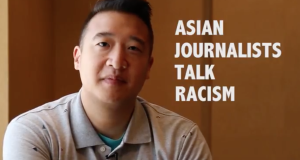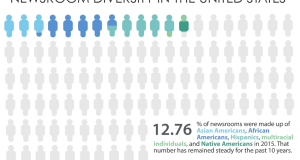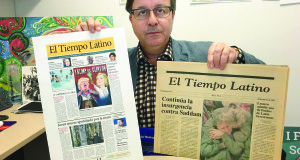Journalism school can be a major investment of time and money. At some schools, it might cost more than $50,000 in tuition and fees and up to two years of training for a changing industry that overall is losing jobs.
In the past three years, it appears as though fewer people have been willing to make such an investment. According to a 2013 study from the University of Georgia’s Grady College of Journalism and Mass Communication, enrollment in journalism programs across all levels from undergraduate and beyond have declined since 2010.
According to the study, enrollment in master’s programs decreased by 1.2 percent from 2012 to 2013, while journalism programs at the doctoral level fell 7.1 percent. At the same time, daily newspaper employment as a whole dropped by 3 percent, according to the American Society of News Editors.
“It’s not easy to know exactly why the enrollments change, but one has to assume that there’s correspondence with … the changes in the industry,” said Lee Becker, author of the Georgia study in a phone interview.
Despite overall declining enrollment, journalism students, faculty and staff still argue that journalism school provides the time for students to focus on improving and broadening their skills, rather than going straight into pushing out dailies the same way they always have.
Becca Andrews, a second-year student at University of California, Berkeley’s Graduate School of Journalism, said she learned more in her one year in journalism school than in the seven years she was a student journalist before she enrolled at Berkeley.
“They say there’s nothing like real-world experience, and j-school’s like real-world experience on steroids without real-world consequences,” Andrews said.
Different journalism schools seem to have seen varying levels of interest in their programs.
Schools such as Columbia said they’ve seen continued strong interest in journalism despite the uncertainty surrounding the industry, while others such as the Philip Merrill College of Journalism at the University of Maryland have had challenges recruiting as many students as it used to.
In fact, applications and enrollment have decreased by 20 percent at Merrill in the past three years, according to Olive Reid, associate dean and director of undergraduate services at Merrill. She said in an email statement that other professional programs and majors have also had decreases because of the recent push for students to enter the science, technology, engineering and mathematics fields.
Ira Chinoy, associate dean at Merrill, said in an email that recruiting for the college is “a work in progress.” The college now reaches out to students as early as high school, offering a sports journalism camp and scholarships for courses at the college for high school students. The college’s officials also set up an exhibition booth at careers fairs like the one at the AAJA convention.
Ava Thompson Greenwell, an associate professor who has taught at Northwestern University’s Medill School of Journalism for over 20 years, has seen enrollment numbers at Medill vacillate in the past five years.
“We still see a high interest in students who are interested in journalism, but I would say that they are certainly asking more questions about the value of the degree and asking more questions about what their career options are when they graduate,” Greenwell said.
If students are unsure of whether to enroll in journalism school, they should consider whether they can find a job or an internship that can teach them what they want to learn, Greenwell said. If you can, then you don’t have to go to journalism school, she said.
“It depends on what [a student’s] goals are,” Greenwell said. “What is the program offering you that you couldn’t get on your own?”
Greenwell said that in-depth editing and evaluation of one’s work are benefits to attending journalism school that’s harder to come by in internships or jobs.
“Internships are good and we encourage them, [but] it’s just a shorter time period and I don’t think you’re going to get as much critique as you would really need,” she said.
Another advantage to attending journalism school might be the multimedia and other digital training it often offers – skills that would likely make for a more marketable journalist.
Students and journalism school recruiters also said many students are older and looking to go back to school and make a career change. Some schools even offer programs specifically for students in mid-career. Some schools such as Columbia and University of Maryland offer master’s programs specifically for mid-career journalists.
Some students, like Andrews, just weren’t decided on what to do next.
“A lot of people in my class are older; they came [to have]a career boost,” said Andrews, who is 23. “We’re all pretty different, but most of us came to be in some kind of a transition.”
She says it’s good training, but it comes at a high cost. Andrews paid more than $30,000 for tuition and fees as a non-resident student from Tennessee last year, not including room and board. The Berkeley School of Journalism offers teaching assistant positions to students in their second year as a way for them to offset partial costs – Andrews’ job next year will cover her non-resident tuition but not the rest of it.
To her, though, journalism school is still worth it. She passed up multiple newspapers who were interested in hiring her and instead went to Berkeley looking for a change, wanting to learn long-form and narrative writing.
“I’m very concerned about the amount of debt I’m in right now,” she said. “But I will say personally this is the best move for me.”
Follow @Kristen_Taketa on Twitter.
 VOICES Publishing from the AAJA National Convention
VOICES Publishing from the AAJA National Convention







